Non-Fungible Tokens (NFTs)

Non-fungible tokens, or NFTs, have quickly risen in popularity, capturing the attention of artists, investors, and collectors worldwide. At their core, NFTs represent a unique and indivisible digital asset, typically, but not limited to, digital artwork, virtual real estate, or digital collectibles. Unlike cryptocurrencies such as Bitcoin and Ethereum, NFTs derive their value from their distinctiveness and inability to be exchanged for one another on a one-to-one basis, hence the term “non-fungible.”
Built on blockchain technology, NFTs provide a tamper-proof and decentralized digital record of ownership, authenticity, and provenance. This allows creators to retain full control and ownership of their work, even as it changes hands and increases in value. For collectors and investors, NFTs offer a way to own a rare piece of digital art with the added security and verifiability that blockchain technology provides.
NFTs have opened a myriad of possibilities for both creators and enthusiasts in various industries and sectors, including gaming, sports, and entertainment. Their rapid growth and adoption can be attributed to the desire for digitization and an internet-based sharing economy. As NFTs continue to evolve and permeate the modern digital landscape, they promise to redefine how we interact with and value digital assets.
Concept and Origin of NFTs
Non-fungible tokens (NFTs) are unique digital assets stored on a blockchain, acting as a form of ownership for digital and sometimes even physical items. Unlike cryptocurrencies such as Bitcoin or Ethereum, which are fungible, NFTs cannot be exchanged on a one-to-one basis with another NFT of equal value due to their distinctiveness.
The origin of NFTs can be traced back to 2012 with the creation of the Colored Coins concept, which allowed users to create unique digital assets on the Bitcoin blockchain. However, it was with the advent of the Ethereum protocol that the technology took significant strides forward. Ethereum introduced the ERC-721 token standard in 2017, which became the foundation for creating and managing NFTs today.
Notable moments in the NFTs’ timeline:
- 2017: CryptoKitties, a digital collectible game, became the first popular implementation of the ERC-721 standard.
- 2018: Decentraland, a virtual reality platform, conducted LAND auctions where users could buy digital, non-fungible land parcels.
- 2020: The NFT market gained momentum, diversifying into areas like digital art, sports collectibles, and virtual real estate.
Below is a table presenting the essential differences between NFTs and cryptocurrencies:
| NFTs | Cryptocurrencies | |
|---|---|---|
| Fungibility | Non-fungible (Unique) | Fungible (Interchangeable) |
| Main Use | Ownership of assets | Exchange of value, store of value |
| Token Standards | ERC-721, ERC-1155 | ERC-20 |
| Examples | CryptoKitties, NBA Top Shot | Bitcoin, Ethereum |
NFTs have gained considerable attention due to their application in various domains, including digital art, music, gaming, and collectibles. High-profile sales, such as artist Beeple’s digital artwork selling for $69 million and Twitter CEO Jack Dorsey’s first tweet selling as an NFT for $2.9 million, have helped propel the technology into mainstream conversations.
How NFTs Work
Blockchain Technology and NFTs
Non-fungible tokens (NFTs) are unique digital assets that can’t be replicated or interchanged, and they derive their value from their exclusivity. NFTs are built on blockchain technology, which ensures the privacy, security, and decentralization of transactions. Essentially, the blockchain acts as a public ledger, tracking and validating all NFT transactions.
Minting Process
The process of creating an NFT is called minting. Artists or creators can mint new NFTs by uploading their digital artwork or collectibles to a blockchain-based platform that supports NFTs. The minting process involves:
- Creating the digital artwork: The artwork must be in a digital format (e.g., JPEG, PNG, GIF).
- Connecting a wallet: The creator’s wallet containing cryptocurrency (e.g., Ethereum) is connected to the NFT platform.
- Minting the NFT: The artwork is uploaded, and a unique NFT is generated with a unique identifier.
- Listing on a marketplace: The NFT is listed on a marketplace to be discovered and purchased by collectors or investors.
Smart Contracts and Royalties
NFTs are powered by smart contracts, which are self-executing contracts written in code that enforce the terms between parties. Smart contracts have several benefits for NFTs:
- Provenance: Ensure the authenticity and uniqueness of the NFT.
- Ownership: Transfer ownership from the creator to the buyer and maintain a record of past transactions.
- Royalties: Automatically implement a percentage-based royalty system for the creator, providing them with a commission for each subsequent sale of their work.
Digital Ownership and Provenance
One of the critical aspects of NFTs is digital ownership. When a buyer purchases an NFT, they obtain the ownership rights to that digital asset. Ownership is recorded on the blockchain, ensuring that each NFT has a unique and traceable history.
Provenance refers to the detailed history of the asset, including its creation, ownership, and sales. With NFTs, provenance is maintained on the blockchain, allowing buyers to ensure that they are purchasing an original piece of digital art or collectible. This process adds significant value to NFTs, as it helps prevent plagiarism and assures the buyer is investing in a genuine digital asset.
Types of NFTs
Art and Collectibles
Art and Collectibles have become a prevalent category of NFTs, transforming the traditional art world. NFTs act as unique certificates of ownership and authenticity, allowing artists to create, sell, and trade digital pieces with a traceable history. Some popular platforms hosting digital art and collectibles are SuperRare, Rarible, and Nifty Gateway.
Collectibles, such as trading cards, can also be tokenized into NFTs. The popular crypto-collectible game CryptoKitties is an excellent example where users can buy, breed, and sell digital cats.
Gaming Items
In the realm of Gaming Items, NFTs have revolutionized the way players interact with in-game assets. By tokenizing items such as skins, weapons, and characters, these NFTs allow players to have true ownership and, in some cases, transfer or sell them across game platforms. This has led to the creation of gaming ecosystems like Decentraland and The Sandbox, where players can tokenize, trade, and sell in-game items.
Virtual Real Estate
Virtual Real Estate is another booming category in the NFT world. Platforms like Decentraland, Somnium Space, and The Sandbox allow users to buy, sell, and trade virtual land and properties. Virtual real estate owners can monetize their land by:
- Hosting events
- Renting out spaces
- Creating virtual experiences
In addition, real-world companies are starting to invest in virtual land, signaling its increasing value.
Domain Names
Lastly, Domain Names in the form of blockchain-based domain extensions (.crypto, .eth, etc.) can be tokenized and traded as NFTs. These decentralized domain names provide several benefits, such as:
- Ownership: The domain owner truly controls the namespace.
- Censorship resistance: Domain names cannot be seized by centralized authorities.
- Interoperability: These domains can work across multiple platforms.
Platforms like Unstoppable Domains and ENS (Ethereum Name Service) facilitate the creation, ownership, and trade of domain NFTs.
Buying and Selling NFTs
NFT Marketplaces
There are several NFT Marketplaces where users can buy and sell NFTs. Some of the popular marketplaces include:
- OpenSea
- Rarible
- SuperRare
- Foundation
These platforms allow artists to mint, list, and sell their NFTs while allowing collectors to browse, bid on, and purchase them. Each marketplace has its own set of features, supported file formats, and fees for transactions.
Auction and Fixed Price Sales
When it comes to buying and selling NFTs, there are two primary methods: auctions and fixed-price sales.
- Auctions: In an auction, interested buyers place bids on an NFT during a specific time frame. The highest bidder at the end of the auction wins the NFT. Auctions can be exciting and competitive, with the final price potentially reaching higher values than initially anticipated.
- Fixed Price Sales: NFTs listed with a fixed price allow buyers to purchase the item at a predetermined price. This method is less competitive and usually quicker, as it does not require a bidding process.
Each marketplace may handle these sales methods differently, so both creators and collectors need to understand the platform’s specific terms and conditions.
Gas Fees and Transactions
The purchase and transfer of NFTs are facilitated by blockchain transactions. These transactions often incur gas fees, which are the costs associated with processing and validating transactions on the network. Gas fees can fluctuate depending on the level of network activity and the complexity of transactions.
It is crucial to consider gas fees when buying or selling NFTs, as they can significantly affect the total cost involved. Some marketplaces have implemented Layer 2 solutions, such as the Polygon Network, to reduce or even eliminate gas fees for users. Additionally, some platforms offer “gasless” minting, where creators can mint NFTs without paying any upfront gas fees.
In summary, buying and selling NFTs involves navigating various marketplaces, understanding sales methods (auctions or fixed prices), and considering gas fees associated with transactions. By keeping these factors in mind, both creators and collectors can make informed decisions when participating in the NFT ecosystem.
NFT Use Cases
Digital Art and Creativity
NFTs have revolutionized the digital art industry by providing a way to prove ownership and rarity of digital creations. Artists can now tokenize their work, attach their signatures, and monetize it in a decentralized manner. This has enabled new revenue streams for creators, who can also benefit financially from any subsequent sales through fractional royalties. Some prominent NFT marketplaces for digital art include:
- OpenSea
- Rarible
- Foundation
- SuperRare
Collectors also enjoy the possibility of showcasing their acquired art in virtual galleries or social media platforms, providing further value and increased visibility for the artists.
Entertainment and Media
The entertainment industry has started to explore the potential of NFTs in various ways. Musicians can now release limited editions of their songs or albums as NFTs, and some artists have already held successful NFT auctions for exclusive music content. This extends to:
- Movie and TV show collectibles
- Unique in-game items for video games
- Virtual merchandise and experiences associated with live events
These new forms of media engagement offer fans a chance to own exclusive content from their favorite creators and foster stronger connections in the process.
Identity and Community Building
NFTs can be used as a means to authenticate users and community members for various purposes. Examples of this application include:
| Use Case | Description |
|---|---|
| Decentralized IDs | A secure and user-controlled digital ID to access platforms and services |
| Proof of Attendance | NFTs are distributed as tokens to prove attendance or participation in events or meetings |
| Membership Tokens | Unique tokens that represent access or benefits within specific communities |
By leveraging the power of blockchain, the NFT ecosystem ensures verifiable trust among users and upholds the core concept of digital sovereignty.
Supply Chain and Real World Assets
NFTs have the potential to improve the management and tracking of physical assets. By tokenizing real-world items like luxury goods, rare collectibles, or even real estate, NFTs can offer transparency in asset ownership, streamline supply chain processes, and reduce the risk of fraud.
Some possible use cases are:
- Tokenizing high-value products to confirm provenance
- NFTs representing real estate ownership or fractional shares
- Tracking components and materials within manufacturing supply chains
While still an emerging area of application for NFTs, there is significant potential for growth and innovation in connecting physical assets with the decentralized world.
Technological Impacts
Decentralization
Non-fungible tokens (NFTs) operate on decentralized platforms, primarily utilizing the powerful Ethereum blockchain. Decentralization allows NFTs to eliminate centralized control, resulting in improved security, reduced fraud, and full ownership for creators and collectors. Thanks to smart contracts, artists can benefit from the direct sale of their work without relying on intermediaries or fearing potential censorship.
Some advantages of decentralization in the NFT market include:
- Peer-to-peer transactions: Faster, seamless, and secure exchanges between creators and users.
- Reduced fees: Lower transaction costs without intermediaries.
- Transparency: All transactions are traceable and visible on the blockchain.
Digital Scarcity and Interoperability
NFTs introduce the concept of digital scarcity by assigning a unique identifier to each token through blockchain technology, signifying they cannot be replaced or duplicated. This digital scarcity results in the valuation of NFTs based on their rarity and uniqueness.
NFTs also foster interoperability among diverse platforms. They can be exchanged and utilized across different blockchain ecosystems and applications, enhancing their functionality and potential use cases. For example, a gamer who owns a unique item in a specific game can trade it for an NFT on another platform or even trade it for a digital art piece.
IP Rights and Licensing
One key aspect of NFTs is the ability of creators to maintain Intellectual Property (IP) rights and licensing over their digital assets. When an NFT is minted, the creator can establish specific rights and permissions associated with the token. These licenses can include:
- Copyright protection: Ensuring the artist retains ownership of the original work.
- Resale royalty rights: Granting creators a percentage of subsequent sales on secondary markets.
- Usage rights: Determining how the NFT can be utilized by its owner within the digital space.
By conferring intellectual property and licensing rights to creators, NFTs empower them to generate revenue and retain control over their creations in the ever-evolving digital landscape.
Legal and Ethical Considerations
Copyright Law
The emergence of NFTs has raised concerns about copyright law. When someone creates and sells an NFT, they transfer ownership of the digital asset but not the intellectual property rights. The original creator retains the copyright, and the buyer requires a license to reproduce or redistribute the content legally. To avoid potential legal disputes, NFT creators and buyers should be aware of the following aspects:
- Fair Use: Understanding the limitations of using copyrighted material
- Licensing: Obtaining proper permissions for distributing copyrighted content
- Originality: Ensuring the work being tokenized is the creator’s original work
Environmental Concerns
NFTs operate on blockchain networks which consume considerable energy, mostly powered by non-renewable sources. Ethereum, the most popular NFT platform, consumes approximately 44 kWh of electricity per transaction1. As a consequence, the environmental impact becomes a crucial ethical consideration. Some proposed solutions to mitigate such concerns are:
- Transitioning to more sustainable consensus mechanisms, like proof-of-stake
- Utilizing eco-friendly blockchains designed for NFTs, such as Tezos
Privacy Issues
As NFTs are traded on public blockchains, privacy issues arise due to their transparent nature. Every transaction and ownership detail is accessible by anyone on the network, compromising a level of anonymity. To alleviate privacy concerns, participants should:
- On-chain privacy: Implement privacy-focused blockchain technology that obfuscates transaction details
- Off-chain privacy: Use decentralized identity management solutions to minimize personal information disclosure
Market Trends and Analytics
The Non-Fungible Tokens (NFTs) market has experienced significant growth over the past few years. Here, we discuss some key market trends and analytics that have shaped the industry.
In recent times, the NFT market has seen an explosion in growth with sales hitting $1.55 billion in the first half of 2021. This astronomical growth showcases the mainstream adoption and increasing interest in digital art, virtual goods, and collectibles.
Major platforms where NFT transactions occur include:
- OpenSea: The largest NFT marketplace, with a trading volume of over $1.1 billion in August 2021.
- Rarible: A prominent, decentralized marketplace with a trading volume of $160 million in the same month.
- SuperRare: A curated platform known for high-quality digital art, garnering a trading volume of $85 million in August 2021.
The following illustrates the top-selling NFT collections in the past year, demonstrating the diverse range of digital assets in the space:
| Collection | Top Sale (USD) |
|---|---|
| CryptoPunks | $7,522,772 |
| Art Blocks | $3,132,186 |
| Bored Ape Yacht Club | $2,912,871 |
| World of Women | $1,841,551 |
| Ringers | $1,745,457 |
Industry-wise, the NFT market is predominantly driven by:
- Art: Digital art pieces account for a significant portion of NFT sales, with Beeple’s “Everyday: The First 5000 Days” selling for a record-breaking $69 million.
- Gaming: Virtual items, such as in-game assets, skins, and avatars, have attracted gamers to the market.
- Collectibles: Digital collectibles, like CryptoKitties and NBA Top Shot Moments, have fueled the NFT craze.
- Metaverse: Virtual land sales and development in platforms like Decentraland and The Sandbox contribute to the market’s expansion.
One crucial factor to consider is the fluctuating value of cryptocurrencies, which could impact NFT prices. For example, as Ethereum’s value surged in 2021, NFT prices increased accordingly. Future market trends will likely be influenced by the volatile nature of the cryptocurrency market and macroeconomic factors.
Future of NFTs
Innovations in NFT Space
With the rapid growth of NFTs, several key innovations are expected to transform the space. Companies and platforms are working on scalability and interoperability to make NFTs more accessible and functional to users. Through sharding mechanisms and layer 2 solutions, such as Optimistic Rollups, platforms aim to reduce network congestion and increase transaction speed.
Furthermore, the development of Fractional NFTs will allow users to own shares of a single NFT, enabling greater liquidity and opportunities for small investors. NFTs will also see integration with DeFi platforms, resulting in unique financial products tied to digital assets. For example:
- NFT-backed loans
- Fractional NFT index funds
- NFT leasing and royalties
Mainstream Adoption
NFTs are already gaining attention from major players in various industries. As mainstream adoption increases, it is anticipated that NFTs will be integrated into:
- Entertainment: Digital art, music, and movies supported by NFTs will revolutionize the entertainment industry. Creators will establish new revenue streams, while collectors will access digital ownership.
- Gaming: In-game assets, collectibles, and virtual lands will be tokenized as NFTs, enhancing in-game experiences and fostering player-driven economies.
- Real Estate: NFTs will be used to represent unique properties, streamlining the buying, selling, and renting process.
- Identity and Certification: NFTs can be utilized to create decentralized digital identities and education certificates, increasing transparency and reducing fraud.
Regulation and Standardization
As NFTs become more prevalent in society, regulators will adapt existing frameworks and develop new ones to address emerging concerns. These regulatory efforts will focus on:
- Anti-Money Laundering (AML): Increased due diligence on NFT platforms and transactions to counter illicit activities.
- Intellectual Property Rights: Ensuring creators’ rights are protected and NFT-authenticated works are properly attributed.
- Taxation: Clarifying tax implications for NFT transactions, income, and capital gains.
Alongside regulation, standardization will be a crucial driver of NFT growth. Establishing clear metadata standards and royalty mechanisms will contribute to the integration of NFTs across platforms and industries, ultimately bolstering their utility and adoption.
Frequently Asked Questions
Q1- How do you purchase an Non-Fungible Tokens on a marketplace?
Answer: To purchase an Non-Fungible Tokens on a marketplace, one needs to follow these steps:
- Set up a digital wallet and ensure it holds a compatible cryptocurrency (mostly Ethereum).
- Choose a reputable Non-Fungible Tokens marketplace, such as OpenSea, Rarible, or Foundation.
- Browse or search for a desired Non -Fungible Tokens, and click on it to view details.
- Click on the purchase or bid button, confirm the transaction in the digital wallet, and pay the required fee.
Q2- What are some common uses for NFTs?
Answer: Some common uses for Non-Fungible Tokens include:
- Digital art: Artists can tokenize and sell their digital artwork.
- Collectibles: Users can purchase unique digital assets, like virtual trading cards or virtual goods.
- Virtual real estate: Platforms like Decentraland allow users to buy, sell, and develop virtual properties.
- Virtual goods in games: Scarcity and ownership of in-game assets can be established using NFTs.
Q3- Can you explain how NFTs derive their value?
Answer: NFTs derive their value from several factors:
- Rarity: A limited supply of certain Non-Fungible Tokens can increase their value.
- Provenance: Authenticated ownership or creation history can make NFTs more valuable.
- Utility: Some NFTs offer access to content, events, or other unique experiences, adding to their value.
- Popularity: NFTs associated with popular artists, celebrities, or brands tend to have a higher value.
Q4- What are the potential downsides of investing in NFTs?
Answer: Potential downsides of investing in NFTs include:
- Market volatility: NFT prices can fluctuate rapidly, leading to potential losses.
- Illiquidity: Selling NFTs might be challenging in the absence of potential buyers or a suitable marketplace.
- Regulatory uncertainty: Future regulations might impact the NFT market and its associated assets.
- Environmental concerns: NFT creation and transactions can consume significant energy, raising ecological issues.
Q5- In what ways can creators monetize their work through NFTs?
Answer: Creators can monetize their work through NFTs by:
- Selling their creations: Artists can tokenize and sell their digital work on NFT marketplaces.
- Resale royalties: Creators can receive a percentage of future sales of their work on secondary markets.
- Offering exclusive content: NFTs can provide access to exclusive content, artwork, or experiences.
Q6- What distinguishes NFTs from other digital assets?
Answer: NFTs are distinct from other digital assets due to:
- Uniqueness: Each Non- Fungible Tokens is unique and cannot be replaced or exchanged at a 1:1 ratio with another NFT.
- Ownership: Non-Fungible Tokens use blockchain technology to verify and prove ownership of a digital asset.
- Scarcity: NFTs can be minted with a limited supply, increasing their perceived value.
- Interoperability: NFTs can be traded, bought, and sold across different platforms and marketplaces.
Footnotes
- Cambridge Centre for Alternative Finance. (2021). Cambridge Bitcoin Electricity Consumption Index. https://www.cbeci.org ↩

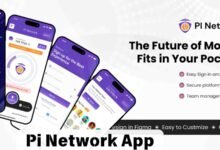
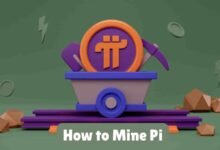
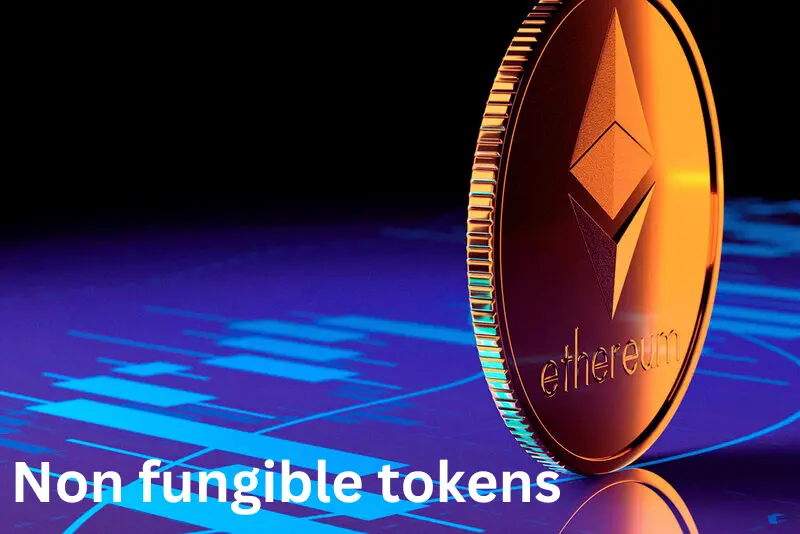
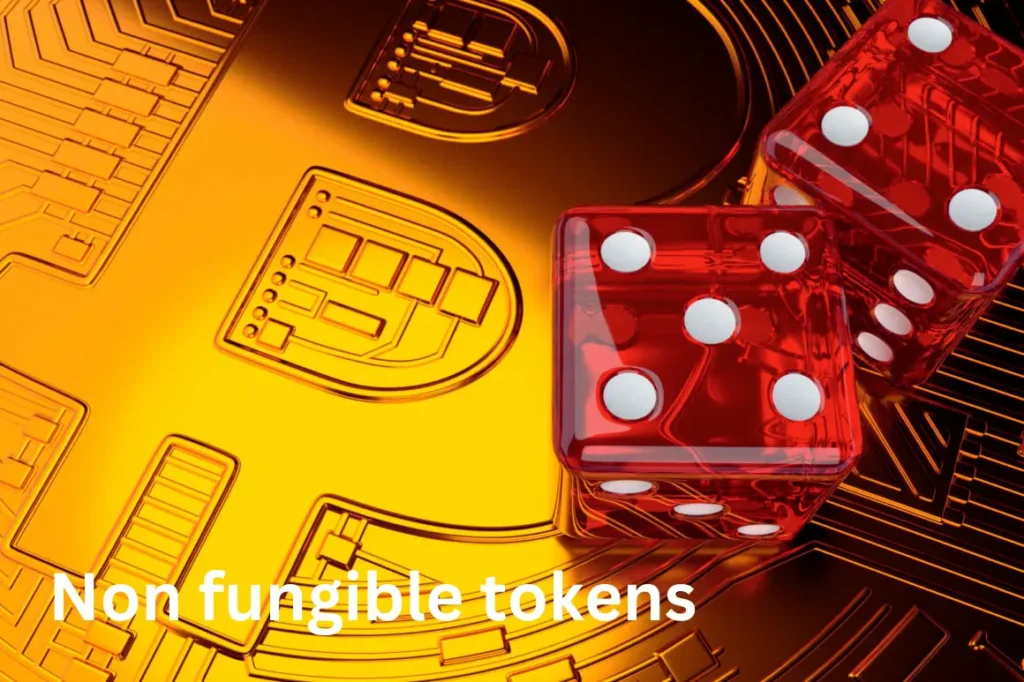

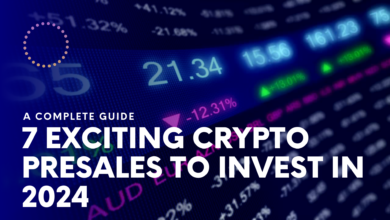
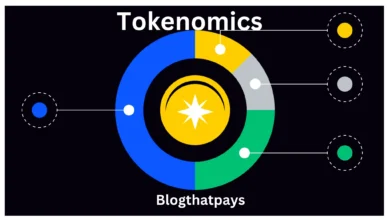
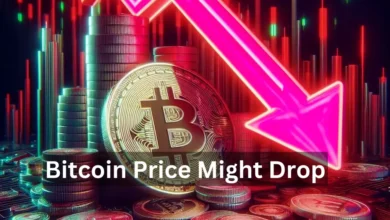
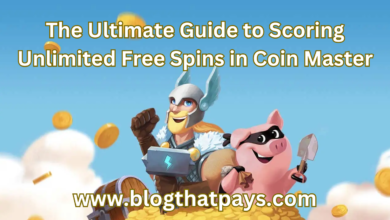
2 Comments